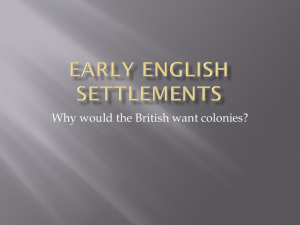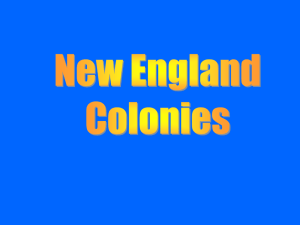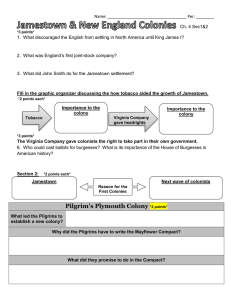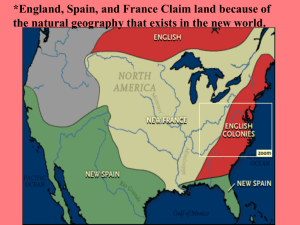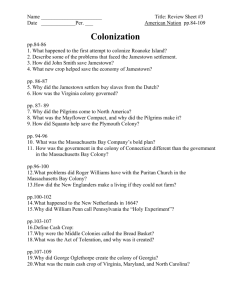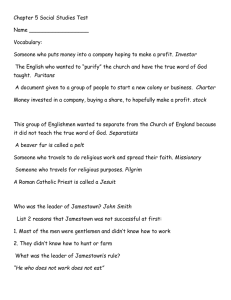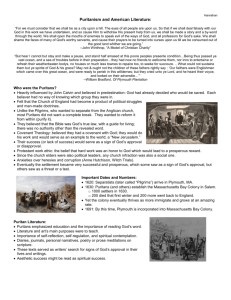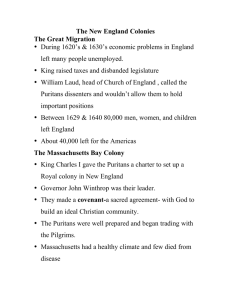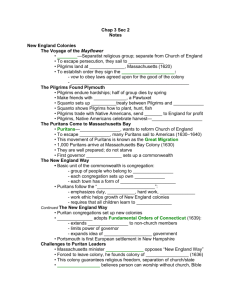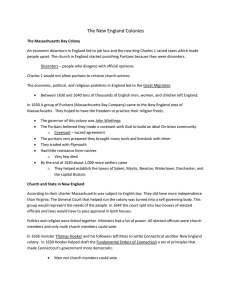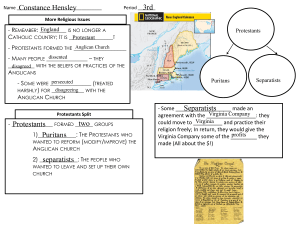Early english settlements
advertisement
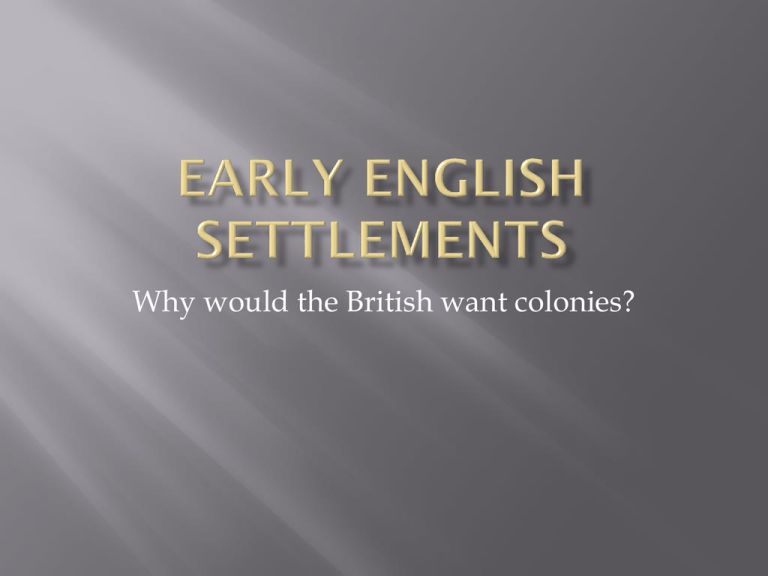
Why would the British want colonies? In 1587, the colony at Roanoke was started by Sir Walter Raleigh. It was unsuccessful and the people “disappeared”. Most historians believe they moved away from the settlement, possibly to live with the nearby native tribe, the Croatoans. In 1607, the settlement at Jamestown was founded. King James I had given English investors of the Virginia Company a charter to start colonies in the New World. Jamestown struggled at first because most of the settlers were townspeople who knew little about farming, or clearing land for settlement. Some even refused to work because they were “gentlemen”, until John Smith said they could not share in the food unless they worked. The Jamestown colony struggled and almost gave up, when ships from England arrived with supplies. They later realized that they could raise tobacco for profit. This cash crop saved the colony. The colony would now have the right to elect its own lawmaking body The people would elect representatives, called burgesses, and the whole assembly would be called the House of Burgesses New settlers who bought shares in the company were promised 50 acres of land 90 women were sent to Jamestown in 1619 Slave ships started arriving from Africa In 1632, George Calvert, also known as Lord Baltimore, petitioned the King for a charter to start a colony. Lord Baltimore was Catholic and was looking for a place where Catholics could worship freely. Catholics, Pilgrims (separatists) and Puritans had all been persecuted under the Church of England. They refused to recognize the king as head of the church and did not accept the authority of the Anglican bishops. Lord Baltimore had been friends with King James and his son Charles. When he converted to Catholicism, their friendship remained, but his career in Parliament was ruined. He owned Maryland as a proprietary colony, which meant he could govern it any way he chose. In 1649, Maryland passed the Toleration Act, which allowed all Christians to worship as they chose. Both of these groups left England for religious reasons. The Pilgrims were separatists – they wanted to separate from the Church of England. Puritans wanted to purify the Church of England. Pilgrims signed the Mayflower Compact before going ashore in Massachusetts. This document was an agreement that the people of the settlement would elect a leader and follow the rules. John Winthrop led a group of Puritans to Massachusetts just five years after the Pilgrims settled there. The Puritans were facing persecution under King Charles, but they were also facing economic hardship because of a decline in England’s wool industry. In Massachusetts, people who owned stock in the company were called “freemen”. All of the freemen together were called the General Court. They made the laws and elected the governor. After disagreements with the General Court in Massachusetts, Roger Williams, and several others, moved to Providence. Others, like Anne Hutchinson, also disagreed with the Puritan leaders. They settled areas like Portsmouth, Newport, and Warwick. These groups were much more tolerant of other religious beliefs than the Puritans in Massachusetts. In 1636, Thomas Hooker decided to move his entire congregation to the Connecticut River Valley. They chose to move because they needed more land to raise cattle, but Hooker was also upset because he thought that everyone should be able to vote, not just church members. In 1639, the settlers in Connecticut adopted the Fundamental Orders of Connecticut. This was a constitution which allowed all men to vote, not just church members. Most settlements were intended for profit. Even the Pilgrims were headed to Jamestown at first. Those who came for religious reasons were still expected to make a living. They would trade with Great Britain and the British would have access to colonial resources.
